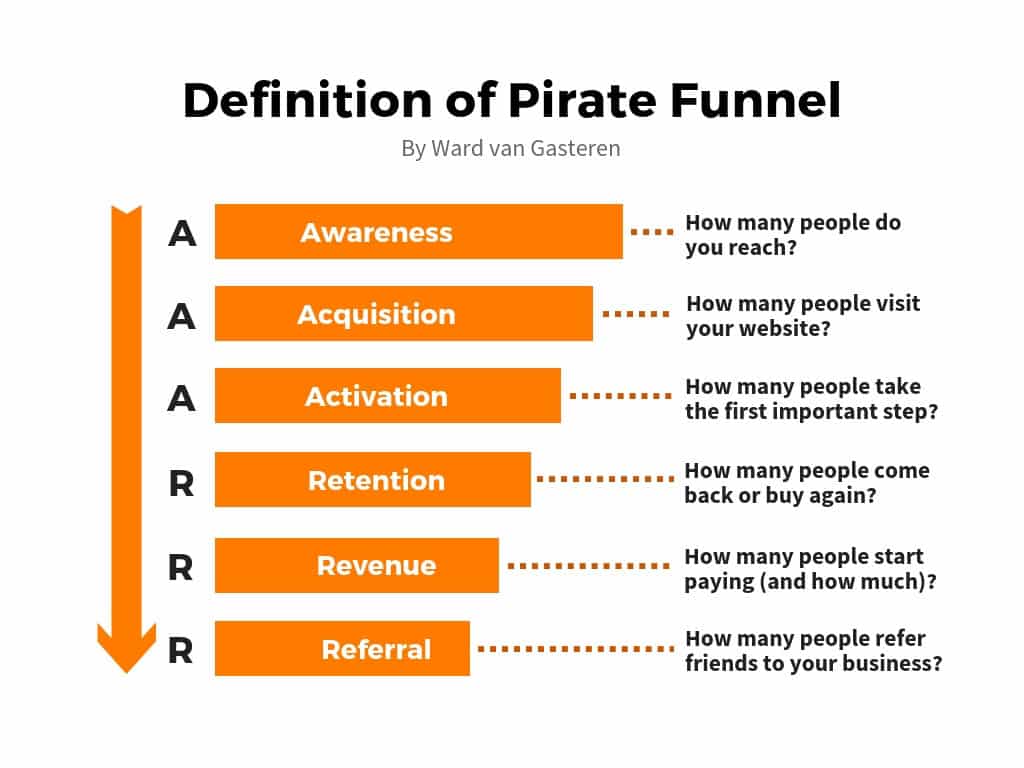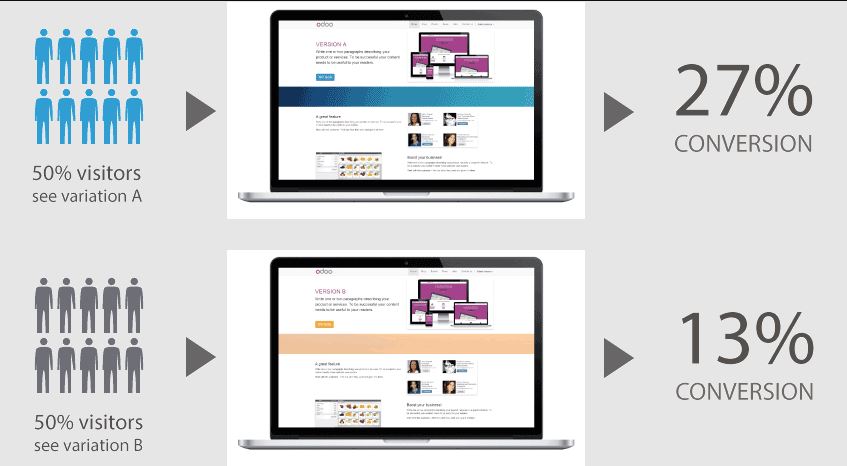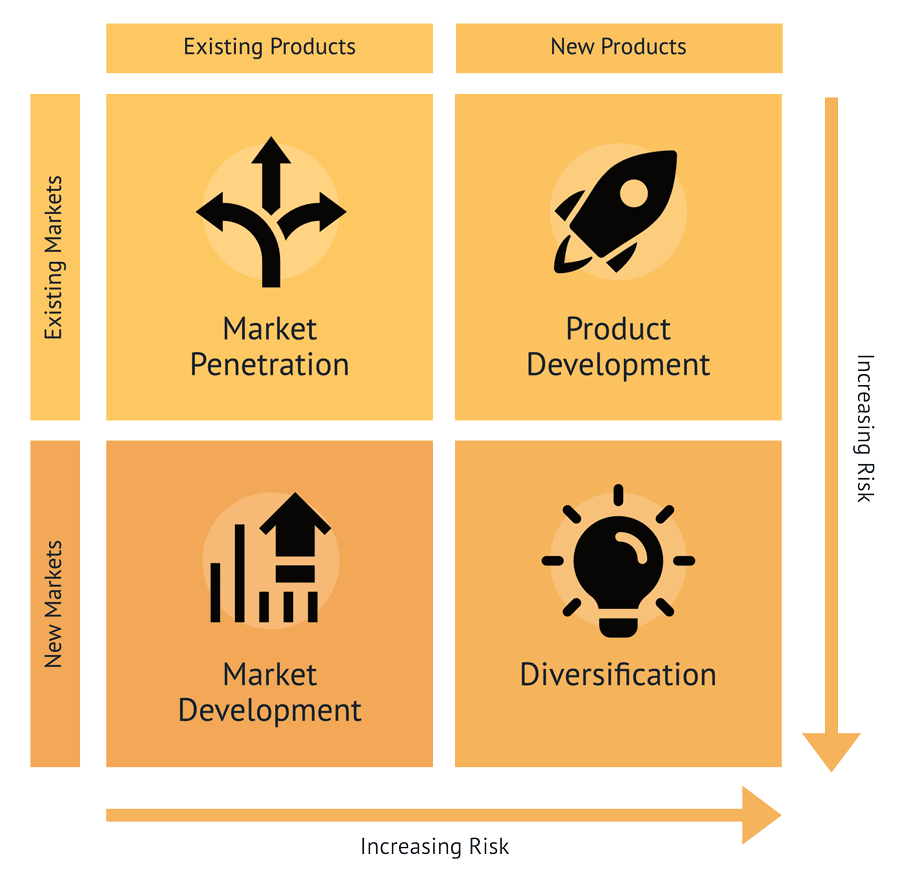Written by
David Campbell is a digital marketing specialist at Ramp Ventures. He helps manage the content marketing team at Right Inbox. When he's not working, he enjoys traveling and trying to learn Spanish.


Don’t have a Reach account? Sign up here
Don’t have a Performance account? Sign up here


Success Hacks — 25 Nov 2025
A Guide to Building Growth Marketing Plans
If you’re like the rest of us, you’ve probably heard the buzzword, “Growth Hacking” thrown around a few times by start-ups. And sometimes, even used interchangeably with the term “Growth Marketing.”
True, both strategies can grow your business. But, while growth hacking takes a radical approach to achieving growth spurts with fewer resources, and in a shorter time; growth marketing uses a scalable, long-term, holistic approach for sustainable business growth.
Clearly, the mindset behind each of these growth strategies makes the key difference in your growth marketing strategy.
With 20 percent of startups failing in the first two years of kicking off, it’s become imperative to have a sustainable growth strategy from day one. If you’ve started out with hacking your way through — well done! But there’s still work to do.
Consider this guide your road map. In this article, we’ll be teaching you how to build an effective growth marketing plan, so you’re ready for the next stage of growth in your business.
Growth marketing is a long-term, comprehensive approach to achieving measurable and sustainable growth in your business. A solid growth strategy does more than a basic marketing plan for your business. It is data-driven and sometimes automated to attract, convert, retain, and grow existing customers into reliable brand ambassadors.
Essentially, growth marketing helps you target and optimize certain metrics in your business by allowing you to:
Although these experiments are built for growth, you must plan for it. That means getting quite comfortable with success and failure as you optimize your processes.
For the best results, your growth marketing strategy must have a clear, SMART goal involving a unique product, the tactics you’ll use, and the people that will be most affected. Only after you’ve laid this groundwork can your growth marketing team get to work.
Growth marketers categorize and test their campaigns based on specific metrics in the growth marketing funnel. These metrics, also known as the pirate metrics, represent stages a customer goes through during their purchase journey with a business.
There are six metrics; Awareness, Acquisition, Activation, Revenue, Retention, and Referral (AAARRR).

Source: Growwithward
The traditional marketing funnel (AIDA) visualizes where your prospects are in their journey, and pushes them through a linear sales grinder to “close” a sale. But the pirate funnel framework takes it up a notch by balancing the focus between sales and growth.
Essentially, it gives businesses a framework to measure success and growth by analyzing the customer lifecycle from their point of contact to conversion.
So, just in case you were wondering, here’s what the pirate funnel covers.
The Awareness phase is the first contact a customer makes with your brand. Although it wasn’t part of the original Pirate funnel metrics, it was added in 2016 by Growth Tribe, effectively turning it from a “sales funnel” to a growth cycle.
In this stage, the question should be, “how many people do you reach through your awareness campaign?”
As you’ve realized, this stage focuses more on awareness platforms and channels that lead you to your target audience and how you leverage them. This could be through podcasts, paid SEO, content marketing, and sometimes, word of mouth.
The KPIs to track in this phase include impressions, vanity metrics, bounce rates, page visits, etc.
Acquisition employs several engagement strategies and channels to acquire the right customers. Therefore, the metrics to focus on at this stage are those directly involved in acquiring a customer on different channels — the customer acquisition cost (CAC).
Customer acquisition is the foundation of every growth initiative. That’s why for this phase, you should focus on individual buyer personas — not “everyone” — to make informed decisions.
The metrics to track vary according to the type of channels you use to achieve your objectives. For example, if you use content marketing for lead generation, you might be leveraging channels like blog posts, videos, and online courses to build trust. So, tracking metrics like website click-through rates and customer acquisition costs would show where you need to improve.
Other metrics to measure are conversion rates, cost per conversion, and channel-specific metrics to channels like PPC and SEO.
The activation stage answers this question: How many leads are willing to take the initial step? In other words, when is the “Aha!” moment for your customers? For example, the Aha! moment could be when new customers register, download an app, or make their first comment.
That makes the activation stage all about incorporating the best customer experience in your buyers’ journey. It also involves strategies like personalization and hyper-personalized email campaigns to create meaningful communication with new users right from the onboarding stage.
Examples of metrics to look out for here are the daily active user count, abandonment rates, lead-to-signup conversion rates, freemium-to-paid rates, etc. Evaluating these metrics allows you to take a data-driven approach and reduce churn.
This metric covers the customer lifetime value in the revenue phase. So, the overarching question in this stage is: Why should customers pay for your service?
It’s essential to figure out the features and benefits of your product or service that would motivate potential customers to buy from you. Then, to boost revenue, aim to triple your customer lifetime value against customer acquisition costs.

Source: Qualitrics
By comparing the customer lifetime value to the customer acquisition cost, you can determine if your growth strategy is heading in the right direction. To be successful in this stage, you want to identify and focus on repeat customers, promote products that pair well with other products so you can sell more later, and hone your pricing strategy.
Ultimately, you must measure metrics that tell you how much you’ve made or lost from your campaign. For example, the customer lifetime value (CLV), annual or monthly recurring revenue, and revenue churn.
As the name implies, the retention stage attempts to maintain your existing users by offering a consistent experience to improve customer loyalty. When a user goes premium or buys a product, you must send them helpful content, offers, or personalized email perks that make them feel special and motivate them to take recurring action.
Thus, to analyze this phase, you should determine: How many people return a second, third, or tenth time? And for how long have they been using your service or products?
Metrics to keep an eye on are customer retention rate, churn rate, average customer lifespan, and reactivation rate.
The referral metric is self-explanatory. How many individuals recommend your business to their friends? When existing customers love your service enough, they’ll recommend your business to others, reducing your customer acquisition rates to zero.
Referral marketing strategies you can use to generate massive growth are referral or incentive programs, influencer marketing, and referral automation software. Analyzing these strategies gives you an insight into customers’ satisfaction levels, product performance, and overall customer experience.
By efficiently leveraging the pirate metrics in growth marketing, you’ll know where you lose the most customers and work on them to ensure growth.
Today’s growth marketers use various strategies to attract, convert, and retain customers. Some marketers use these tactics in the ecommerce space. However, it is still beneficial for brick-and-mortar businesses.
Growth marketing strategies can take many forms. A concrete one examines a customer’s entire lifecycle before running experiments to improve user experience and increase revenue and profits. The result? An influx of customers turned into reliable brand ambassadors that stick around longer.
There are three core components every growth strategy must have:
No marketing campaign gets the best result on the first try; growth marketing campaigns are no different. That’s why you must perform A/B testing for improved success.
In growth marketing strategies, A/B testing (sometimes known as a multivariate tests when testing more than two variables) examines the similarities and differences between two variants of the same marketing campaign.

Source: Learn
Essentially, with A/B testing, you’re driving equal traffic to two pages with the same marketing goal.
To determine which customization works best for their audience engagement and conversion, growth marketers use it in various formats across email marketing campaigns, landing pages, and social media marketing campaigns.
For your business growth marketing plan to succeed, you must experiment with these variations and continue optimizing for success. Thus, if an “A” test increases conversion for one customer segment, chances are “B” might work best for another.
Once you’ve understood what works best for different audience segments, it becomes possible to guide each customer through their journey by improving future campaigns.
Cross-channel is a customer-focused marketing technique that provides customers with a consistent experience. It involves a relatable and constant interaction with new and existing users across strategic mediums or marketing channels.

Source: MoEngage
To implement cross-channel marketing in your strategy, you need to identify the best platforms where your customers already are to promote and share relevant content.
When integrating this customer-focused marketing approach into your growth marketing plan, consider the preferred communication channel for each customer segment and then tailor your campaigns to their needs.
Along with email tracking tools, A/B testing may help you figure out initially that a specific user segment reacts to push message offers at a 75% greater rate than email marketing offers. Using this information, you can streamline future growth marketing campaigns to focus on push offers alone.
It’s imperative to develop a cohesive growth marketing plan that integrates various communication channels to grow your audience.
Here are some ways to create a successful cross-channel strategy:
By having an efficient cross-marketing strategy, you’ll improve conversion by moving leads seamlessly through the sales funnel across relevant marketing channels.
A customer lifecycle refers to the step-by-step progression of a prospect’s journey as they consider, interact, convert, and re-engage with your business. For this reason, the majority of a customer’s lifecycle happens post-purchase.
To simplify this concept, growth marketers focus on three crucial lifecycle stages: activation, nurture, and reactivation. These stages are critical contributing factors to an incredible customer experience. However, you can only utilize this growth marketing component when you know the intricate details of every stage and focus on improving them through specific campaigns.
Activation stage: This is the initial stage. Here, you’ll focus on activating interest and customer attention with welcome and onboarding campaigns that build familiarity and credibility.
Nurture stage: This stage takes the customer-brand relationship to the next step. It accounts for all the marketing efforts you channel into promoting your brands to customers: For example, newsletters, sales, brand updates, and more.
Re-activation stage: Here, your business focuses on re-engaging customers to improve loyalty and retention through abandonment emails, loyalty, win-backs, and post-purchase campaigns.
As you’ve realized, no one stage is more important than the others. That’s why, as a growth marketer, you must think of the customer’s lifecycle as a progressive pathway rather than a “marketing funnel.”
It helps you accommodate and plan for bottlenecks that result from customers’ changing needs at every stage and not chunking down customers from the “top of the funnel” to keep the “bottom” stage full.
Growth is a progressive process. If you breeze through it without strategic planning, you might find it hard to scale. And when it doesn’t work, you’re back to where you started.
While you might encounter some failures, having a road map for your growth marketing plan makes it easier to check back and follow through when you fall off. Plus, you put less pressure on yourself by spreading out the time it’ll take to achieve each milestone.
The Ansoff matrix model leverages four growth strategies to help you achieve your growth marketing goals.

Source: Consulterce
These growth strategies are based on two things: the products you offer now and will offer in the future and the market they serve.
The core aim of this strategy is to launch new products in existing markets. While it’s possible to use this strategy in several other industries, the product development strategy shines best in businesses with Agile environments like SaaS, FinTech, and Core tech.

Source: 4Geeks
For this reason, this growth strategy is not the same across the board. You must leverage different product development techniques like releasing new models, product updates, and upgrades of existing products to achieve maximum growth.
The market development strategy targets unexplored markets. It involves selling existing products to an under-served market in a bid to expand to new markets.
This growth approach caters to different buyer personas and customer segments. So, a prime example would be selling industrial products to household customer segments or expanding service outlets into new geographic regions.
For this strategy, you target new and existing markets using new and existing products. Think of it as a combination of both product and market development. This makes increasing your market share the primary aim of the strategy.
Either way, one thing is a given: there must be an existing market to leverage. It could be one where you already dominate or a market where there’s competition with on-par offerings.
Granted, it could be a little challenging and tricky to enter new markets where there’s dominant competition. However, it’s possible to achieve this when you identify — or create — a differentiator. You could do this, for example, by attracting your customers with a price decrease or upselling existing products at the same or better price than your competition.
Whichever way you plan to achieve this, the market penetration strategy is your launchpad to a scalable growth marketing plan.
Of all four growth strategies in the Ansoff Matrix, Diversification is the riskiest.
Why? It involves going headfirst into an unknown market and hoping things work out great in the end.
You’ll be targeting completely new markets with new products to grow your market share. You can now see why without proper planning and execution, this strategy may very well be a flop.
But not to worry, there’s a better way to go about diversification. By leveraging strategic partnerships with brands with a similar goal to yours, you share the risk and reward of this strategy.
In essence, you’re leveraging an existing market — that isn’t yours yet — in a bid to explore and develop new products that cater to their needs. For this, you must collaborate with a partner that offers a complimentary product to attract users in an existing market.
Growth marketing is customer-centric. Compared to traditional marketing that’s focused on getting new customers, growth marketing relies on scalable processes to acquire the right customers with minimum input over time. Hence, it’s necessary to consider factors that bring you closer to this result.
For starters, you want to run a funnel assessment to identify stages with the biggest challenges and opportunities to prioritize.
For example, if there are many leads visiting your website at the top of the funnel but not enough click-throughs to the next stage, you need to understand their reason for dropping off. These reasons are the major factors to consider that’ll shape your growth marketing plan.
Next, create a buyer persona to identify your ideal customers and their unique problems. This gives you a clearer insight into their demographics and psychographics — age, location, what motivates them to patronize a brand, and how they act on it.

Source: Foundr
Using this information and a mix of quantitative and qualitative tactics, you streamline your goals and align their experience based on where they are on their customer journey.
Finally, with all the experimenting involved in growth marketing campaigns, it’s imperative to have a budget that cuts it. After all, growth marketing is marketing. Therefore, to develop an effective growth marketing plan, you must allocate a budget to marketing channels that would pay off in the short and long term.
Now that you’ve understood the essential components and factors for an effective growth marketing plan, let’s discuss how to build a sustainable growth plan for your business.
First off, a growth strategy is not a growth marketing plan.
A growth strategy is a comprehensive road map that outlines progressive steps to business growth. Now what this means is, if a specific strategy doesn’t fit into your growth marketing plan — switch it up. And by doing this consistently, you’ll end up with a template that works while being scalable.
While it is crucial to have a portfolio containing your growth marketing plan, using a growth strategy template streamlines your efforts, so you can focus on documented steps for growth without digressing.
You want to grow your business, awesome! But you can’t grow all facets of your business at once. Instead, you need to clearly define your target area of growth at a particular time and work on it. This makes it measurable and makes growth metrics easy to track.
Of course, this will depend on your business’ needs and pain points at the moment. These areas of concern could be to:
While targeting one initiative may cause a ripple effect in another, it’s fine. Growing complementary facets of your business is okay if it doesn’t affect the entire growth marketing plan. For example, improving customer service could have a positive effect on customer acquisitions.
It’s not enough to identify an area that needs growth in your business. You must run a market analysis to determine feasibility and profitability in the long run. The only way to achieve this is through market and industry research.
Analyzing the market and industry data for a new growth initiative reduces the risk of failure and determines the feasibility of the growth marketing plan.
You could do a market analysis by collating data through surveys from existing and potential customers or focus groups. Or better still, research the state of your industry to gather additional data you can leverage.
These findings will influence your goal expectations and structure your growth marketing plan in the long run.
Since you know your area of growth and have established a reason for it, the next thing is to define a clear growth goal. As expected, your growth marketing campaign must have a specific, measurable, achievable, and realistic goal. Ideally, you must tailor these goals with an end objective in sight.
Without an end goal, diversions and distractions may creep in, extending the growth phase, causing you to lose momentum and waste resources. For best practices, ensure you measure your goals using established metrics within a timeline.
For example, increasing the number of app downloads by 30 percent every quarter for three years is a specific and measurable goal. You can hit specific milestones and track success metrics with the right team, rather than simply having an “increase app downloads every year” goal in your plan.
Again, make plans. The whole idea behind creating an effective growth marketing plan is to develop one you can sustain and scale seamlessly. How do you do this? Simple — document your course of action, literally.
To develop a cohesive growth marketing plan, you’ll need the input of everyone on your team and take into cognizance your team’s strengths and weaknesses. This plan must account for straightforward actions like:
Not only will planning ahead be insightful, but it will streamline your efforts to attain your growth goal in record time.
At this stage, you’ve done a good job; well done! The last step before executing your plan is discovering the best tools and requirements necessary to facilitate the process.
For instance, do you have enough funding to see your growth marketing project through? If you don’t, then now is the time to seek funding. Additionally, you should consider leveraging tech tools and software that’ll expedite the entire process.
Ensure to integrate simple and efficient growth marketing tools that your team can adopt easily into the growth marketing plan. And, if necessary, also hire niche experts such as consultants to chip in one or two expert ideas during execution.
If you’ve followed our guide judiciously to this point, you’re ready to put all your resources and refined growth strategies into action.
But while you’re at it, communicate and update stakeholders to keep them accountable. Compare initial results with the projected results in your plan. This will let you know how far you’ve come and how much effort will take you to the desired goal.
Like in A/B testing, adjust your strategies as you execute the growth marketing plan. While there is no set-in-stone way to leverage growth hacking and growth marketing tactics, be open-minded enough to start with simple strategies and work your way through.
Growth marketing requires going above and beyond what a conventional marketer would do on a good day. And you must put in consistent effort to see results.
For sustainable business growth, you must test and experiment with new ideas, implement your actions swiftly, and track the results. Then, using those results, create a repeatable and scalable process for your growth marketing plan.
Rather than leveraging only the traditional sales funnel, use the pirate metrics too, and adjust your growth tactics through each stage. Whether you run a SaaS or FinTech business, you can fine-tune your growth marketing initiatives using growth strategies to streamline your efforts around products and markets.
Be intentional about the growth process, and you’ll see results soon enough.

Written by
David Campbell
David Campbell is a digital marketing specialist at Ramp Ventures. He helps manage the content marketing team at Right Inbox. When he's not working, he enjoys traveling and trying to learn Spanish.
Stay on top of the competition. Let us keep you updated with news, insights, and more



